Little brown jobs. That’s how many people refer to sparrows.
But by teasing out the details of the plumage, behavior, and distinctive sparrow songs of these birds, we can have greater success at correctly identifying them.
Alabama boasts 20 resident species of sparrow, yet more than half of them are only here during the colder months when the state’s mild climate offers them a refuge from the bitter winters further north.
Sparrows are some of the most eager birds to take food from your backyard bird feeder, so it can be great fun watching lively flocks of them descend on your feeders during the winter, their hearty enthusiasm is quite contagious!
Here is our list of 20 sparrows in Alabama, starting with the species that bird watchers can see all year, followed by those that are just present here during the colder months.
9 Sparrows That Reside in Alabama All Year
Eastern Towhee

- Scientific Name: Pipilo erythrophthalmus
- Length: 6.5-8.2 in
- Weight: 1.1-1.9 oz
- Wingspan: 7.9-11.0 in
Although not everyone would think of towhees as sparrows, they are in fact part of the ‘New World sparrows’ or Passerellidae family. This family is closely related to buntings, from which you might see some resemblance.
Eastern Towhees are the most frequently seen sparrow in Alabama during the summer when many other sparrows migrate north. But they are one of the most common birds in the winter too.
Very colorful for a sparrow, their rusty red flanks and white chest stands in contrast to their darker heads and backs, which are black in males and beige in females.
Eastern Towhees are fairly common in overgrown backyards, as they love rummaging through thick shrubs. They’ll also come to visit bird feeders, usually hopping around on the ground to clean up the spillover from other birds.
Chipping Sparrow
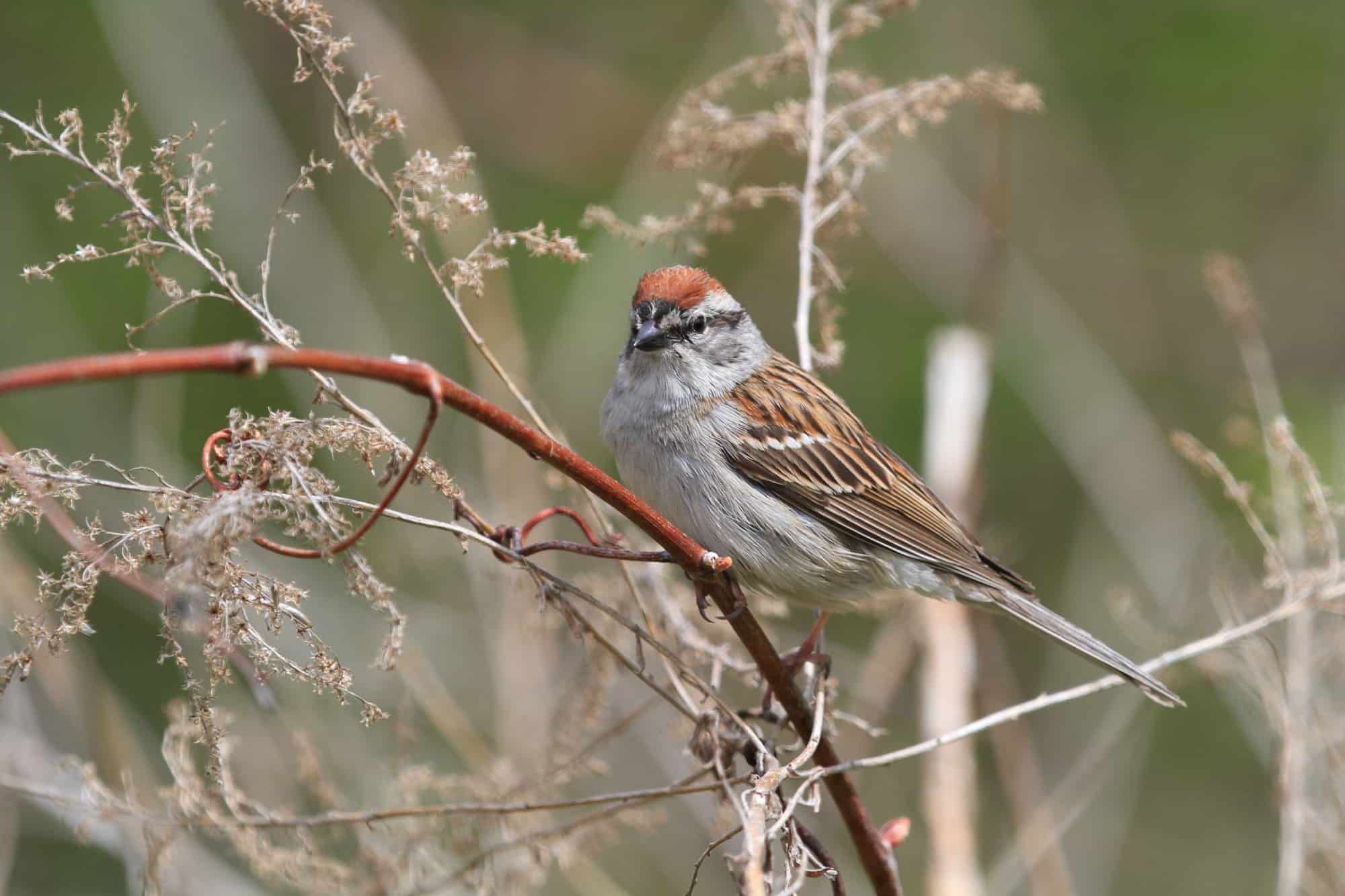
- Scientific Name: Spizella passerina
- Length: 4.7-5.9 in
- Weight: 0.4-0.7 oz
- Wingspan: 8.3 in
Like the Eastern Towhee, chipping sparrows are more often seen in Alabama in winter than in summer, but at all times of the year, this is a fairly frequently seen bird.
As more of a classic sparrow, chipping sparrows normally spend their time in small flocks (sometimes known as tournaments) in areas with plentiful trees.
They get their name from their fluttering chipping, chirping calls which are so bright and cheerful.
You can attract chipping sparrows to your yard with various kinds of seeds, such as black oil sunflower seeds, on seed hoppers and bird tables.
House Sparrow

- Scientific Name: Passer domesticus
- Length: 5.9-6.7 in
- Weight: 0.9-1.1 oz
- Wingspan: 7.5-9.8 in
As an introduced species, house sparrows don’t migrate, and so simply remain in the same localities all year round in Alabama.
This can cause some problems for native birds since house sparrows are very assertive and can claim nesting sites before other birds have the chance. They’ve even been known to take over other bird’s nests, as I’ve seen them do before with house martins.
Nevertheless, house sparrows are very cute, and a large flock of them chirping away feverishly never fails to raise one’s spirits!
Flocks of house sparrows are regular visitors to bird tables, and will sometimes decimate a day’s worth of food in a few minutes!
Song Sparrow

- Scientific Name: Melospiza melodia
- Length: 4.7-6.7 in
- Weight: 0.4-1.9 oz
- Wingspan: 7.1-9.4 in
Perhaps song sparrows weren’t so-called for a particularly brilliant voice, but for the impressive consistency with which they use it! But still, the repeated trills can become quite mesmerizing if you’re within earshot of them all day.
Song sparrows are much more numerous in Alabama during the winter months than in summer, when the vast majority of them migrate north to breed in Canada.
During this winter period, you can attract song sparrows to your bird feeders by offering various seeds, cracked corn, etc.
Field Sparrow
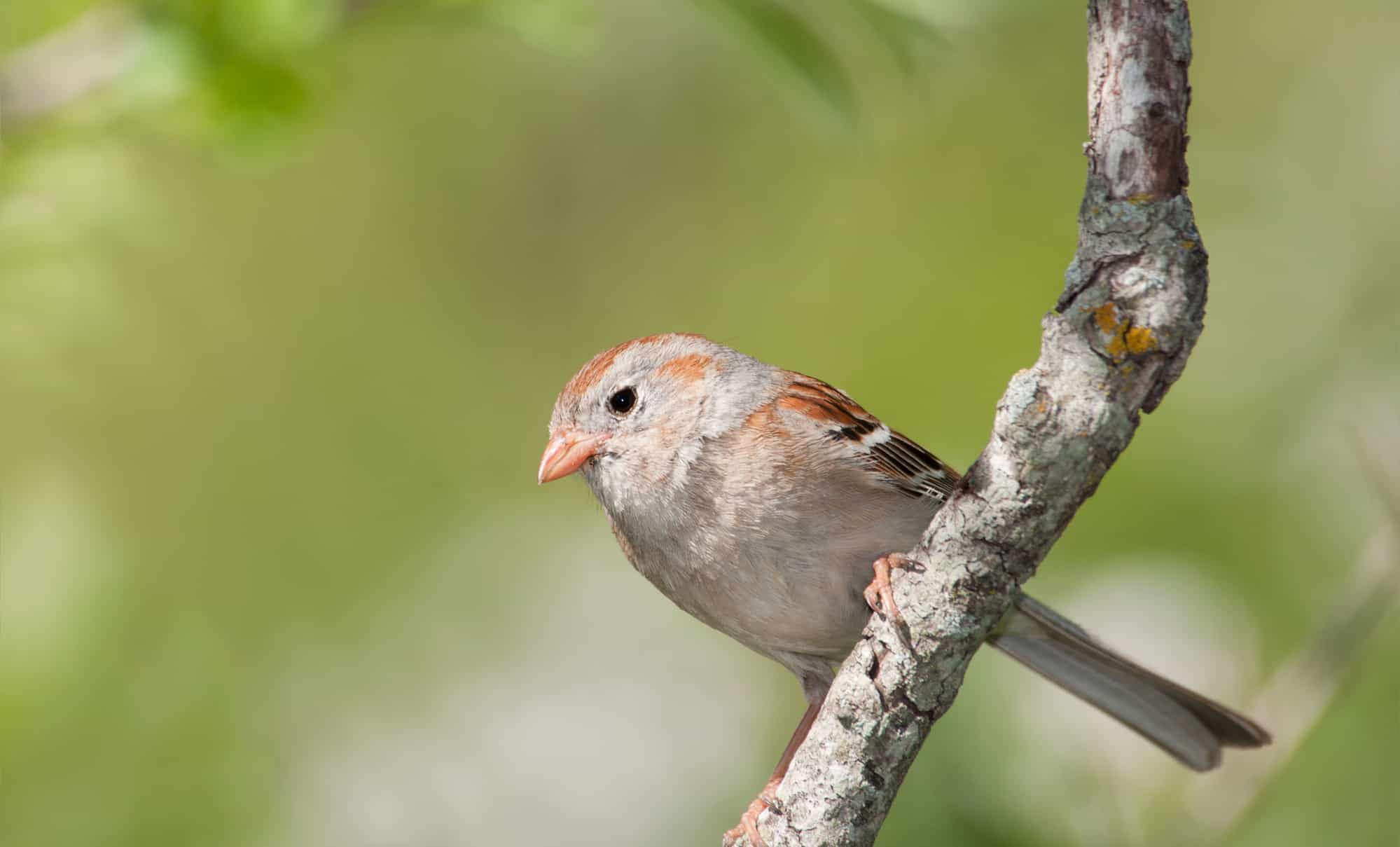
- Scientific Name: Spizella pusilla
- Length: 4.7-5.9 in
- Weight: 0.4-0.5 oz
- Wingspan: 7.9 in
Just like towhees and juncos, field sparrows are from the New World sparrow family, and that’s why they look a bit like buntings.
Field sparrows behave rather like buntings too, in that they prefer the open countryside to towns and cities. In general, these rather shy birds are difficult to spot, except for when the male calls early each morning during the spring and summer from the top of a tree.
You may be able to lure field sparrows for a closer inspection by offering them a variety of seeds from your backyard feeder.
Field sparrows nest in the open ground and have an amazingly short turnover period. Their chicks hatch after 11 days of incubation, and the chicks fledge the nest just 8 days after hatching!
Lark Sparrow
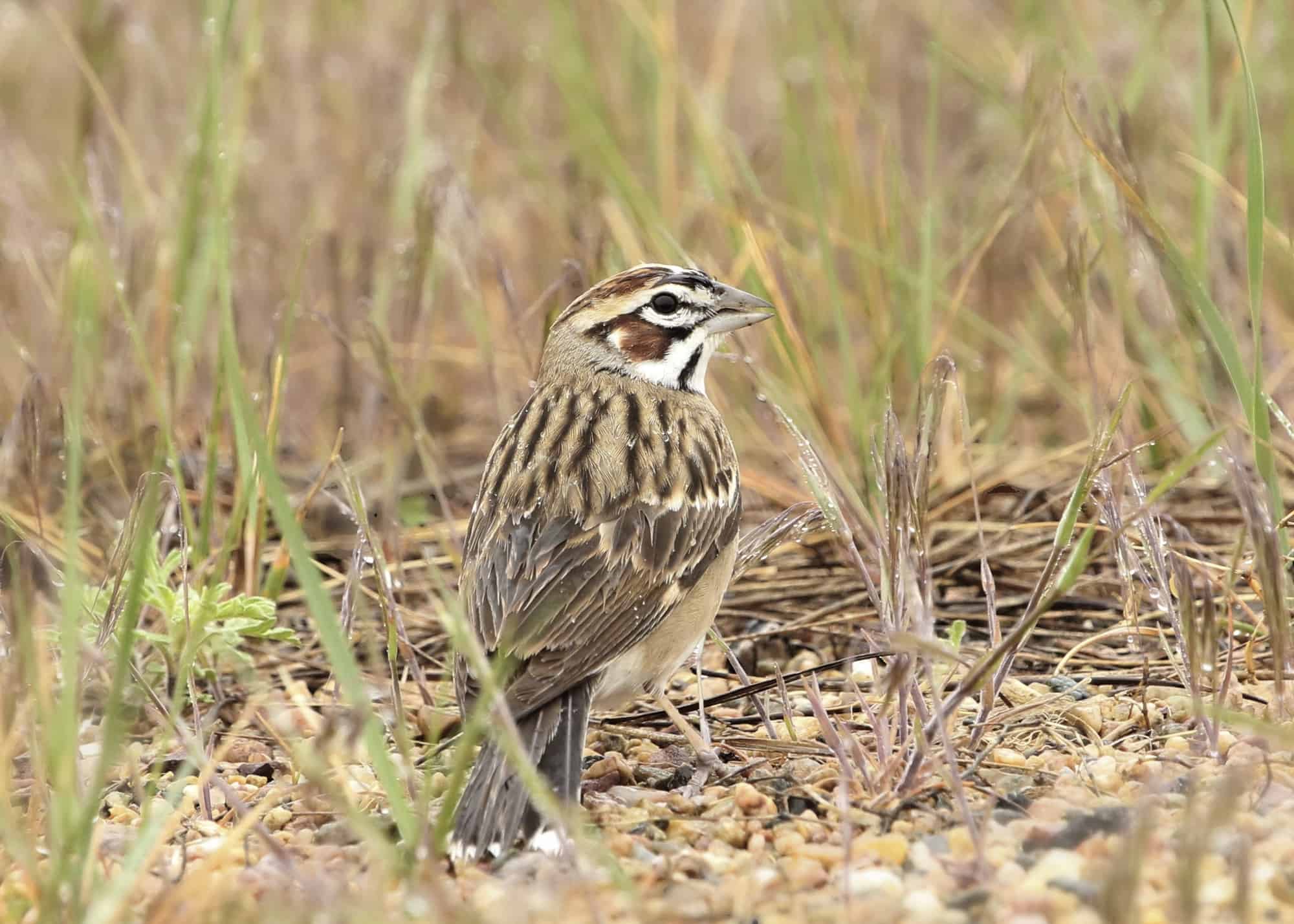
- Scientific Name: Chondestes grammacus
- Length: 5.9-6.7 in
- Weight: 0.8-1.2 oz
- Wingspan: 11.0 in
Lark Sparrows are another member of the New World sparrow tribe, are you beginning to note the pattern? This species especially looks more like a bunting than a sparrow.
You’re much more likely to see the warmth-loving lark sparrow between April and August in Alabama when this warmth-loving bird flies north from Central America to breed. Only a few hang around for the winter.
Unlike most sparrows, this species is unfussy when it comes to sitting in their nests. Nests can be built on the ground, in low trees, or sometimes in rocky landscapes.
Typical for the sparrow family, the young are fledged in a very short time from the beginning of incubation (around 22 days).
Seaside Sparrow
- Scientific Name: Ammospiza maritimus
- Length: 5.1-5.9 in
- Weight: 0.7-1.0 oz
- Wingspan: 7.1-7.9 in
Since the seaside sparrow prefers spending time near the coastline, its population in Alabama is mostly confined to the tiny seaside area around the port city of Mobile.
Salt marshes are the favorite haunt of this little sparrow, where it will use its large, stout bill to dig in the mud for sea creatures as well as feed on terrestrial insects, spiders, and plant seeds.
Although the brown color of its plumage is indistinct, the seaside sparrow can be readily identified by its bizarre, mechanical-sounding call.
Grasshopper Sparrow
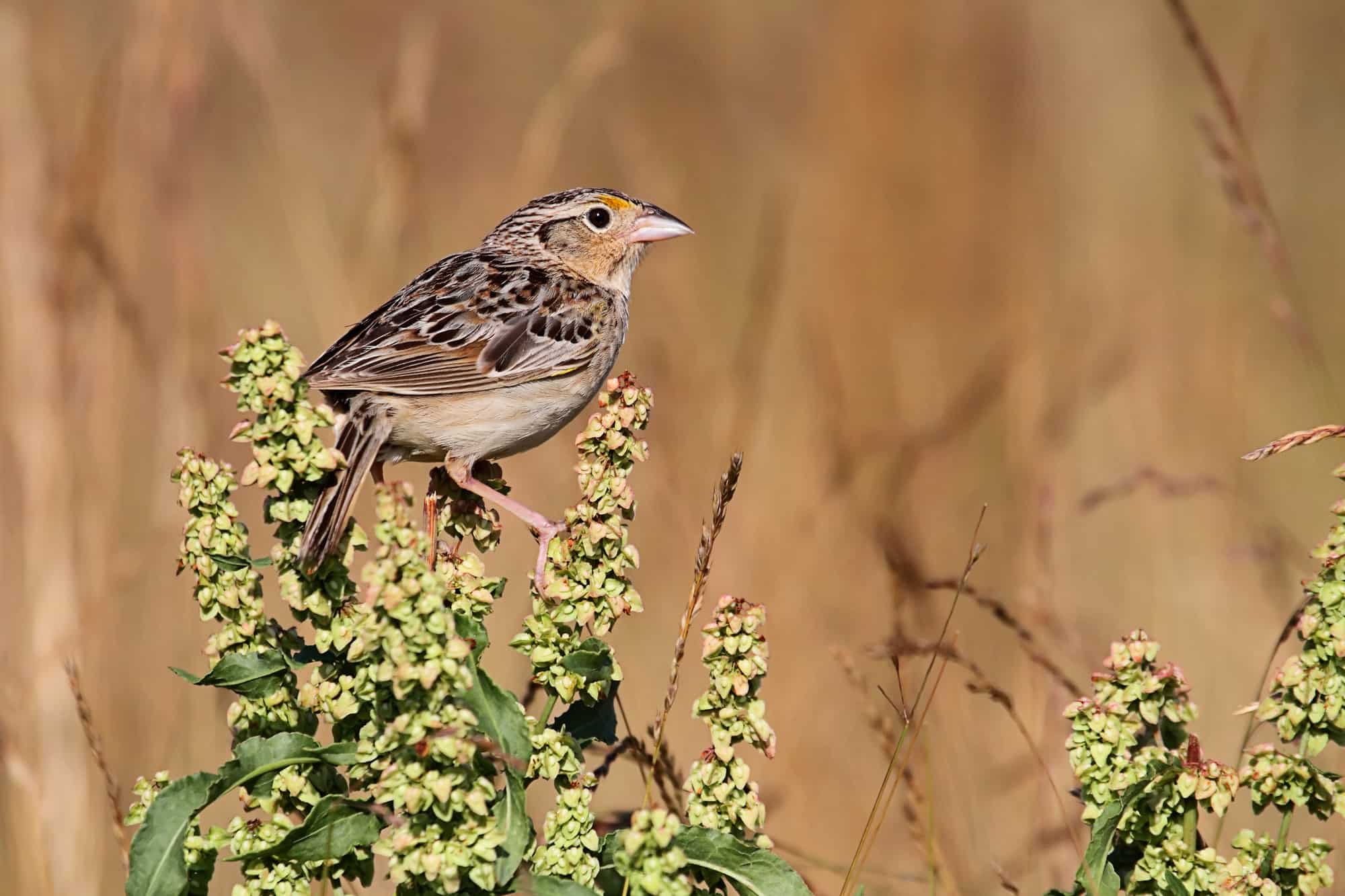
- Scientific Name: Ammodramus savannarum
- Length: 4.3-4.5 in
- Weight: 0.5-0.7 oz
- Wingspan: 7.9 in
While grasshopper sparrows can be seen all year round in Alabama, you’re more likely to see them during the breeding season when they nest in the northern part of the state. During winter they are occasionally seen in the south.
But perhaps one of the reasons that this bird is so rarely seen is the small size of their bodies and strange song that you might mistake for an insect! Indeed, grasshopper sparrows got their name from their call which sounds much like a grasshopper.
Coincidentally, these birds also feed heavily on grasshoppers, as well as other grassland insects and spiders. During autumn and winter, they also eat many kinds of seeds.
According to one study, grasshopper sparrows have suffered a 68% decline between 1970 and 2014, owing largely to habitat loss of natural grasslands to intensive agriculture. Protection and reintroduction of these grasslands will be critical for their return.
Bachman’s Sparrow
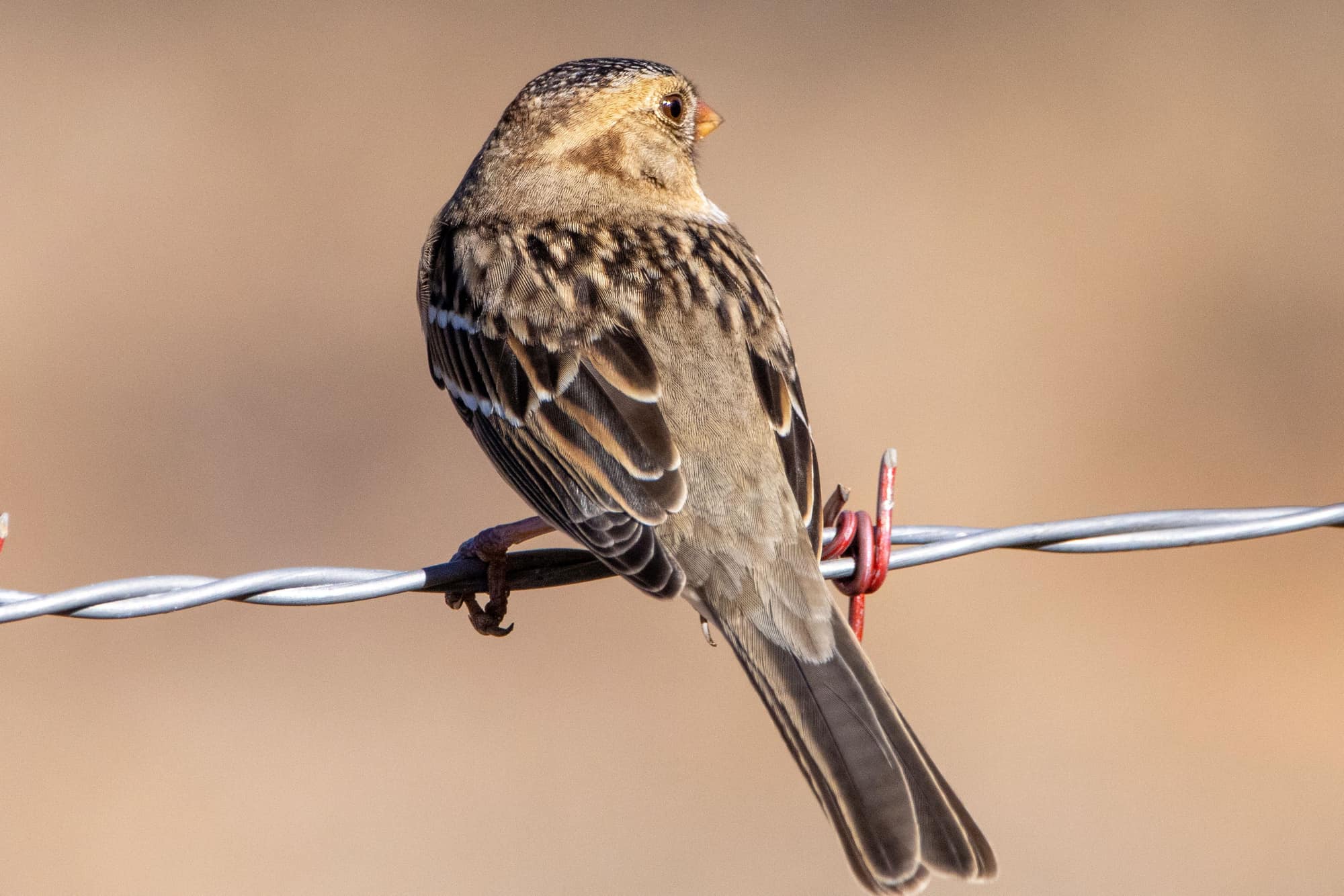
- Scientific Name: Peucaea aestivalis
- Length: 4.9 – 6 in
- Weight: 0.6 -0.8 oz
- Wingspan: 6.9 – 7.5 in
Our final sparrow which resides in Alabama all year is the Bachman’s Sparrow, but sadly, these birds are a rare sight nowadays.
Considered near threatened by the IUCN, it is thought that habitat loss is to blame for its demise. Bachman’s sparrows like to breed in open pine forests where they build domed nests hidden among long, dense grass or bushes.
Although this sparrow is usually quite static and its range is confined to the southeastern states of America, flocks may sometimes migrate to more southern areas in cold winter weather.
Let’s hope that conservation initiatives can restore their populations to their former glory.
11 Sparrows That Can Only Be Seen in Alabama During Winter
White-throated Sparrow
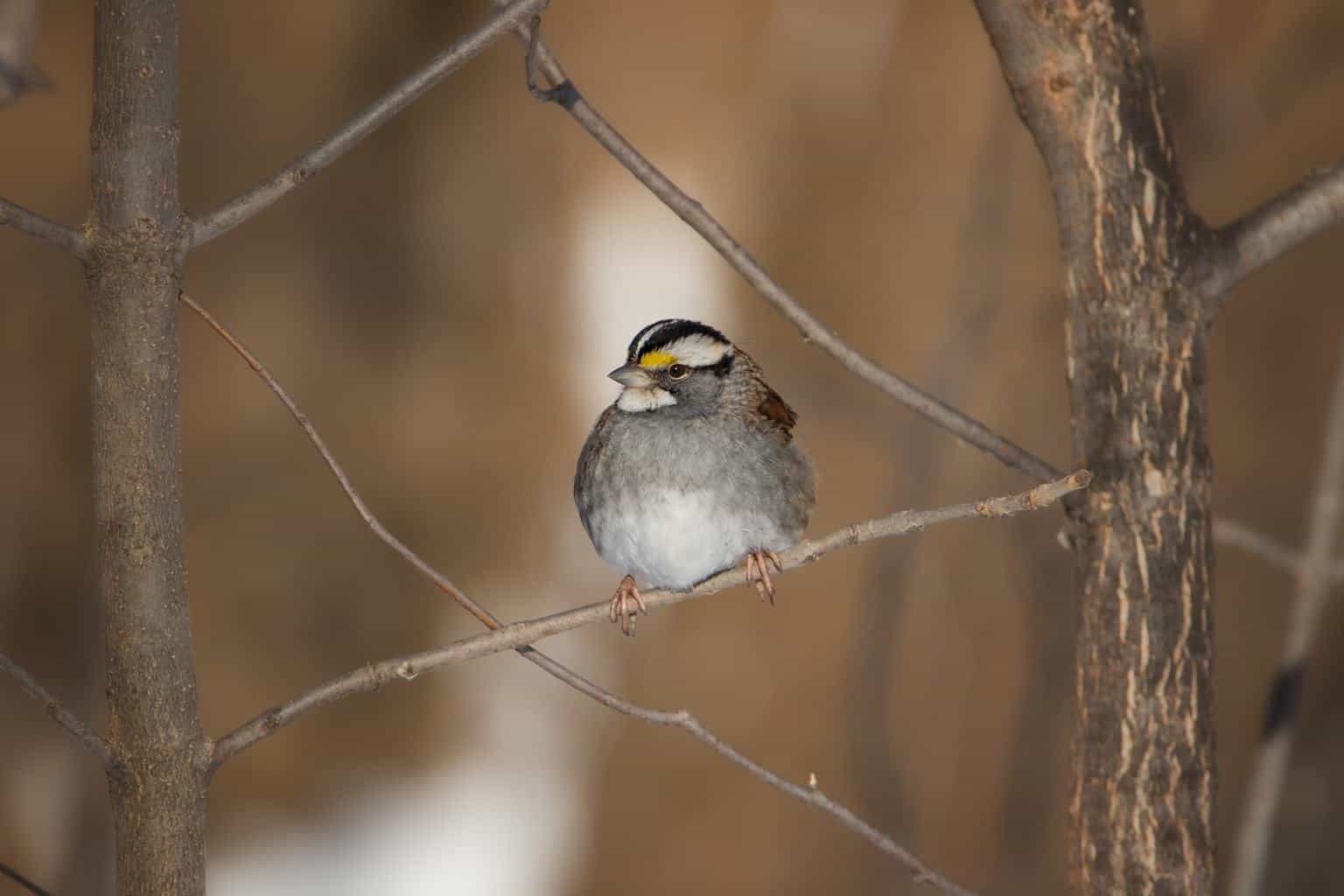
- Scientific Name: Zonotrichia albicollis
- Length: 6.3-7.1 in
- Weight: 0.8-1.1 oz
- Wingspan: 7.9-9.1 in
White-throated sparrows are fairly ubiquitous in and around Alabama wooded areas between November and April when large flocks of these pretty little birds return from their breeding grounds in more northern parts of the continent.
With their gorgeous black and white striped head and yellow eyebrows, this striking, medium-sized sparrow is quite easy to identify.
And even if you don’t get a clear sighting of one, they are also easy to distinguish by their curious, mournful whistle.
Mostly eating seeds of various weeds and grasses, white-throated sparrows may also be attracted to gardens to nibble on autumn fruits, as well as to visit feeding stations during the winter.
Dark-eyed Junco
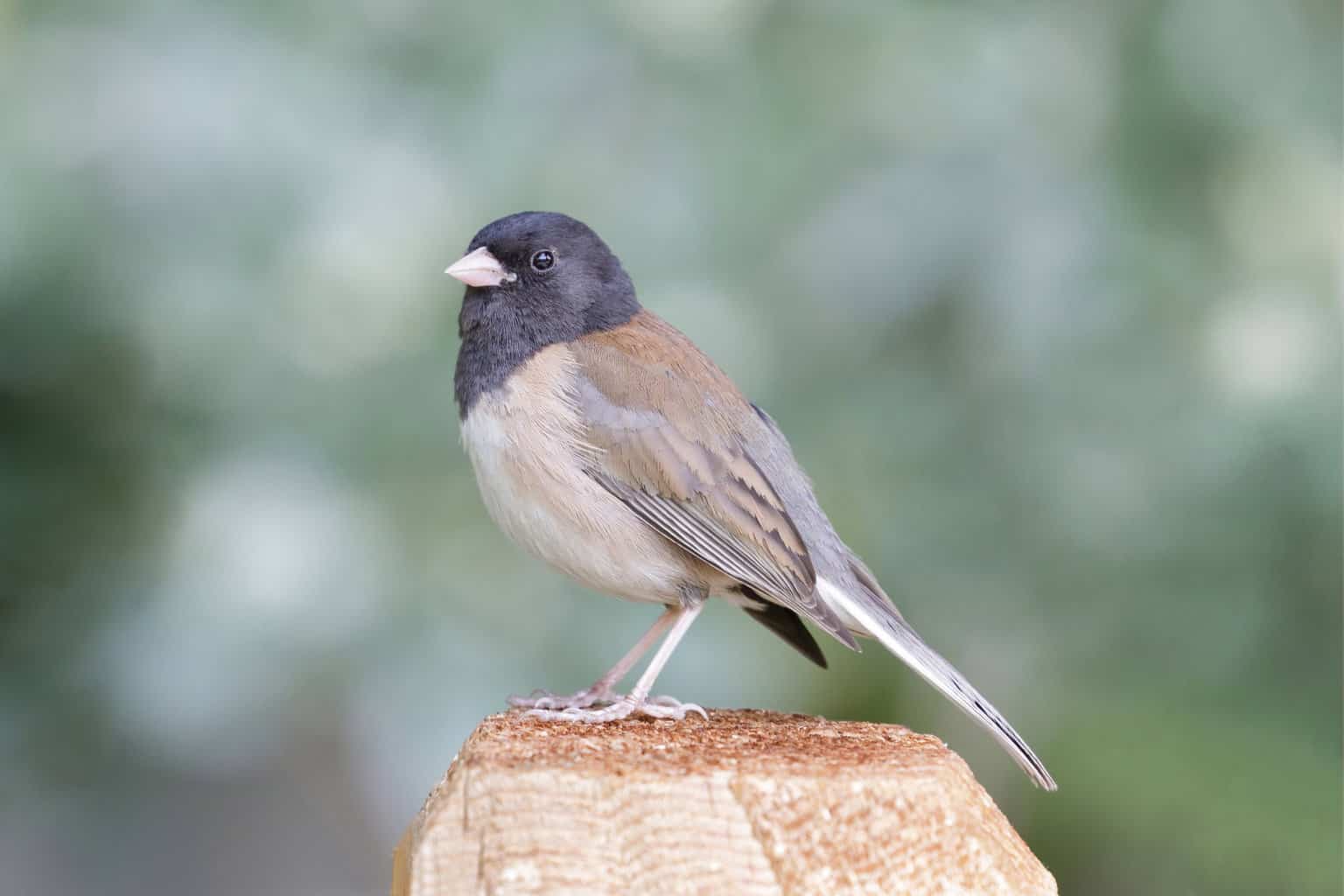
- Scientific Name: Junco hyemalis
- Length: 5.5-6.3 in
- Weight: 0.6-1.1 oz
- Wingspan: 7.1-9.8 in
Dark-eyed juncos have an unusual name and appearance for a sparrow. And what makes things even more confusing is that they’re incredibly variable birds with an enormous number of subspecies!
In general, these very smooth, sleek-looking birds have gray heads, necks, and breasts, with gray or brown backs and wings, contrasted by a white belly. A detailed identification guide is necessary to identify the exact subspecies!
Sometimes an easier way to identify them is by their simple repetitive trilling call, often made from the top of a tree.
Dark-eyed juncos can be attracted to winter feeding stations but will normally only take food off the ground – a great clean-up squad for the messy leftovers of other birds!
Swamp Sparrow
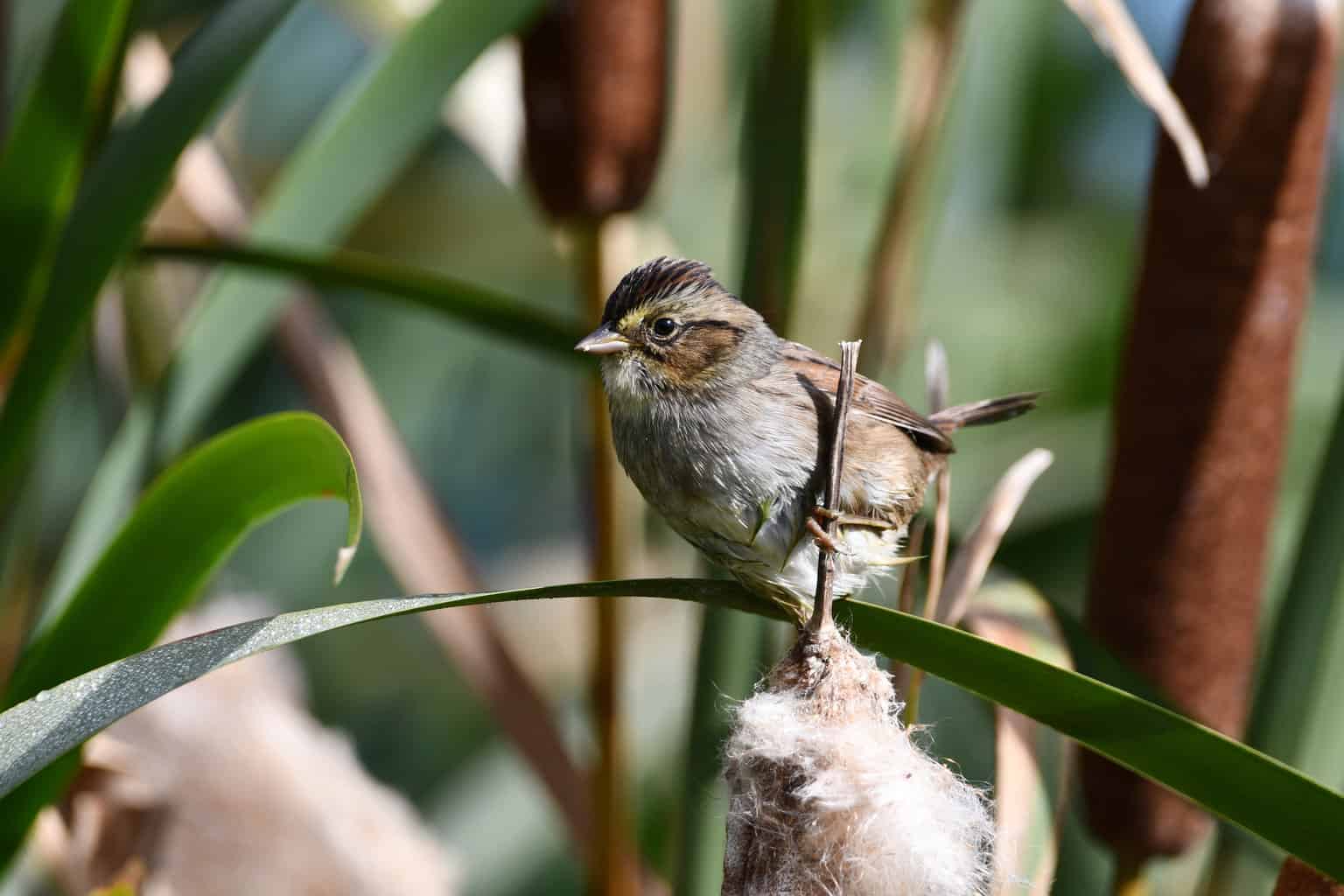
- Scientific Name: Melospiza georgiana
- Length: 4.7-5.9 in
- Weight: 0.5-0.8 oz
- Wingspan: 7.1-7.5 in
Swamp sparrows are seen less frequently than many other sparrow species, not because of their small population, but because they tend to remain in swampy marshes, and rarely visit human habitation.
This bird of the eastern states can be found in Alabama between September and May, where it takes advantage of the state’s relatively mild winters.
In summer, swamp sparrows head north to breed in the northeast United States and Canada.
Savannah Sparrow
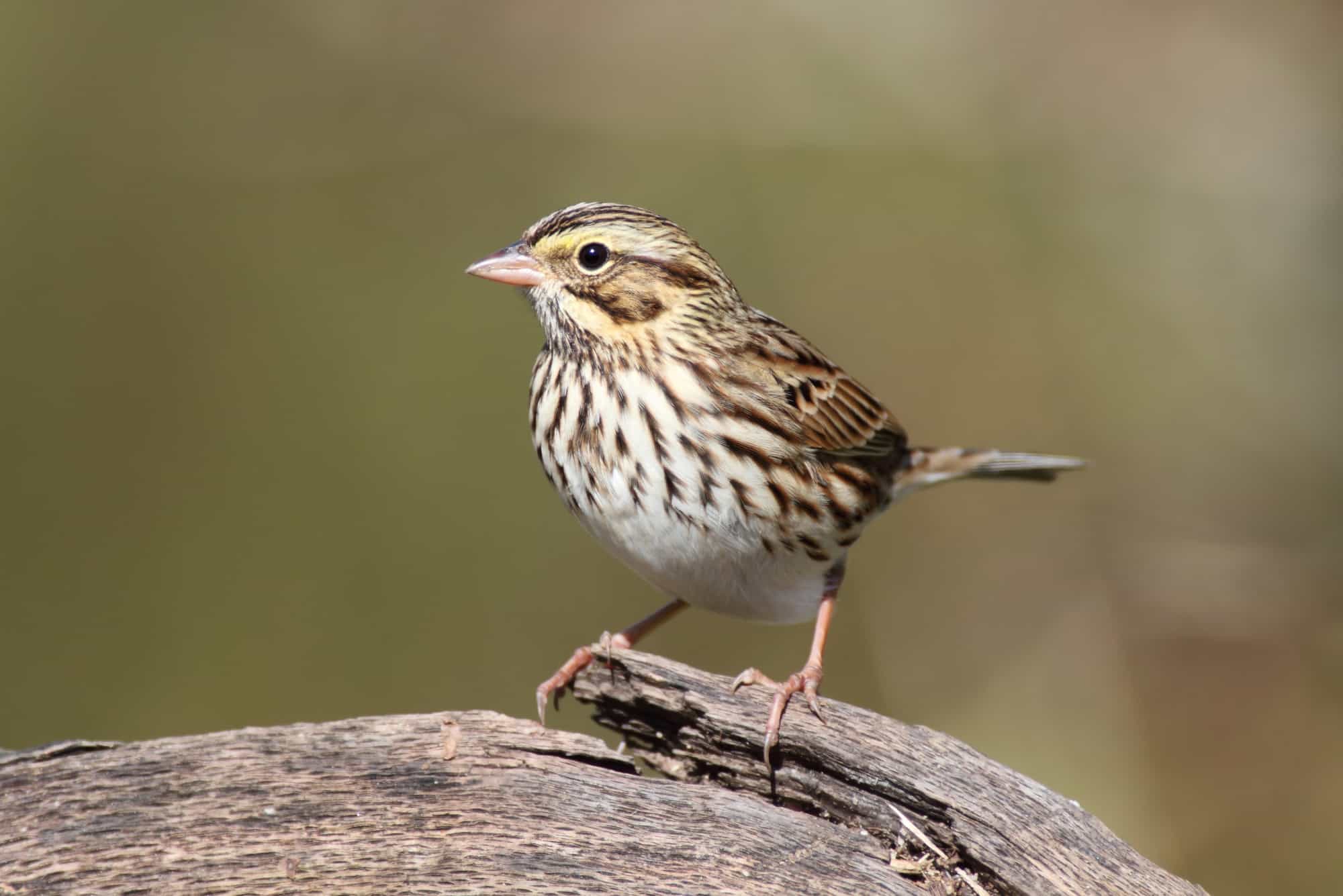
- Scientific Name: Passerculus sandwichensis
- Length: 4.3-5.9 in
- Weight: 0.5-1.0 oz
- Wingspan: 7.9-8.7 in
With its speckled bunting-like appearance, it can be difficult to distinguish savannah sparrows by sight from other similar species. Only with binoculars might you be able to spot its most defining characteristic – the subtle yellow streaks above its eyes.
As their name suggests, this sparrow species prefers spending its time out in the wilderness rather than in towns and cities, and won’t be tempted to garden bird feeders like many other beautiful sparrows are.
Instead, this species feeds mainly on insects, which it can be seen chasing down either in short bursts of flight or on foot, among scrubby vegetation on the ground.
Fox Sparrow

- Scientific Name: Passerella iliaca
- Length: 5.9-7.5 in
- Weight: 0.9-1.6 oz
- Wingspan: 10.5-11.4 in
Looking more like a miniature thrush, fox sparrows have a lovely brown back tinted ‘foxy’ red, and a speckled chest. With a wingspan of almost a foot across, they are much larger and stockier than most sparrows too.
During the breeding season, fox sparrows spend their time in northern coniferous forests and shrublands, but a large number of them migrate to the southeastern United States to escape the frigid winters.
Fox sparrows enjoy eating grains and autumn fruits and can be attracted to your backyard by offering them a bird feeder or native fruiting shrubs.
White-crowned Sparrow
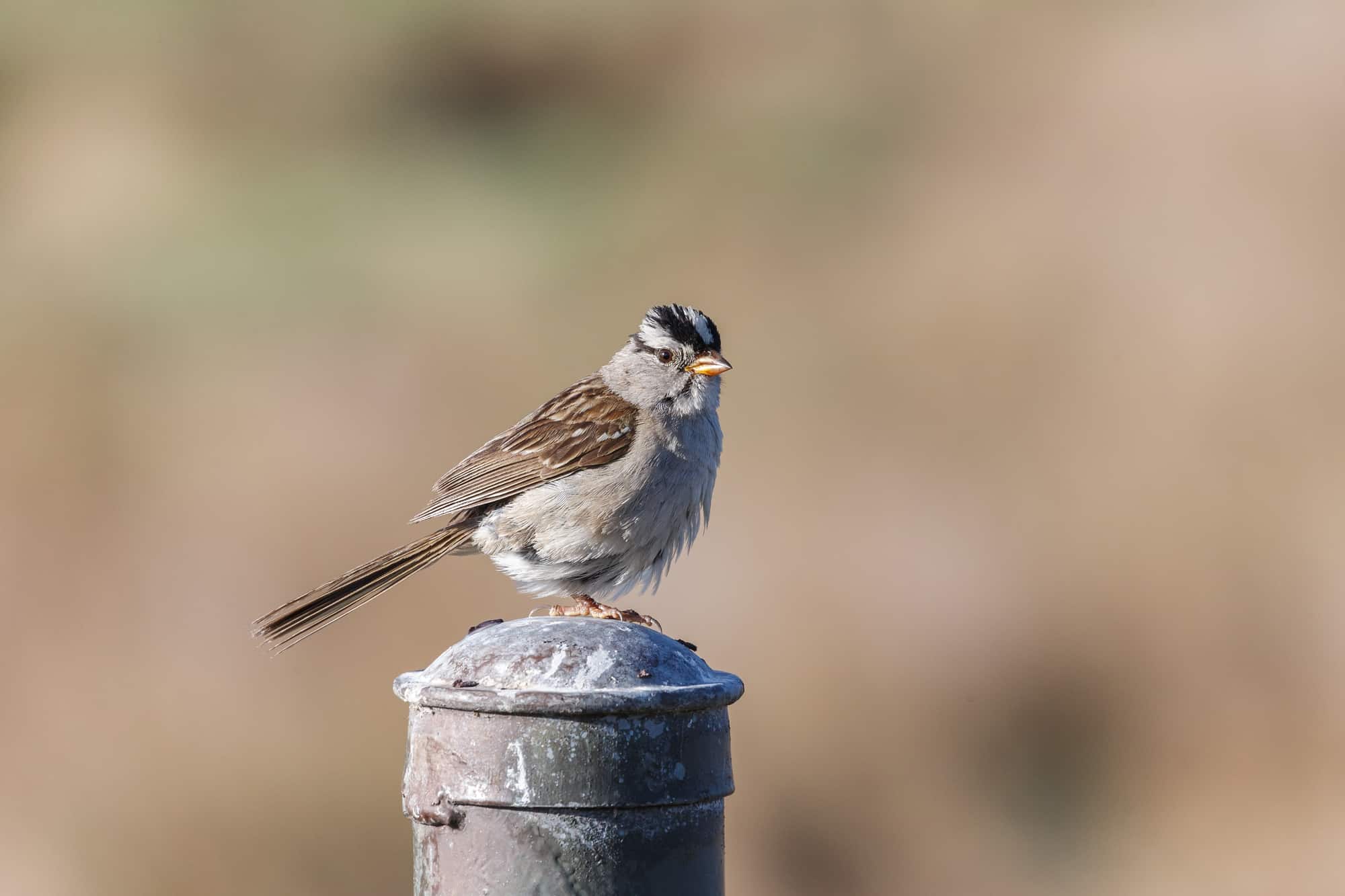
- Scientific Name: Zonotrichia leucophrys
- Length: 5.9-6.3 in
- Weight: 0.9-1.0 oz
- Wingspan: 8.3-9.4 in
The white-crowned sparrow is quite distinctive and easy to identify, and if you see one in Alabama, give yourself a gold star! They’re only seen by 1% of birdwatchers here during the winter.
The large, speckled sparrows have long tails and small yellow bills and are most easily identified by the black and white stripes on their heads.
Sometimes seen foraging for winter fruits, you might also be able to lure this elusive bird to your backyard by offering sunflower seeds and other nutrient-rich treats!
Vesper Sparrow
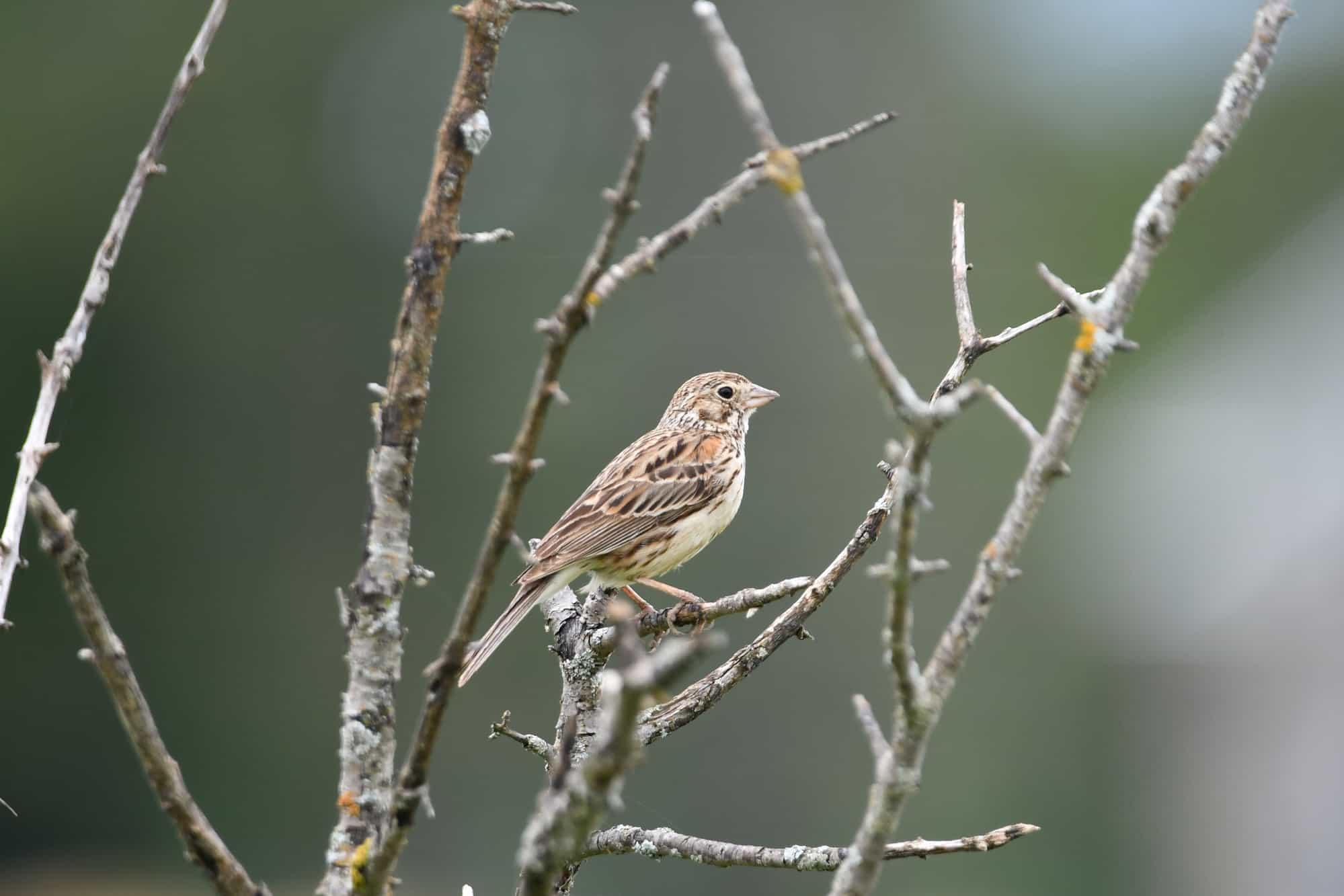
- Scientific Name: Pooecetes gramineus
- Length: 5.1-6.3 in
- Weight: 0.7-1.0 oz
- Wingspan: 8.9-9.6 in
The sweet song of a male vesper sparrow from the top of a shrub or fence post is a calming and soothing backdrop to time spent outside nearby these little birds.
Although these sparrows don’t breed in Alabama, you might hear the males practicing their singing voices in late February or March before they fly to their northerly breeding grounds in Canada and the Northern United States.
Vesper sparrows are believed to be closely related to lark sparrows and spend much of their time hopping around in low-growing shrubs, looking for food and taking dust baths.
LeConte’s Sparrow
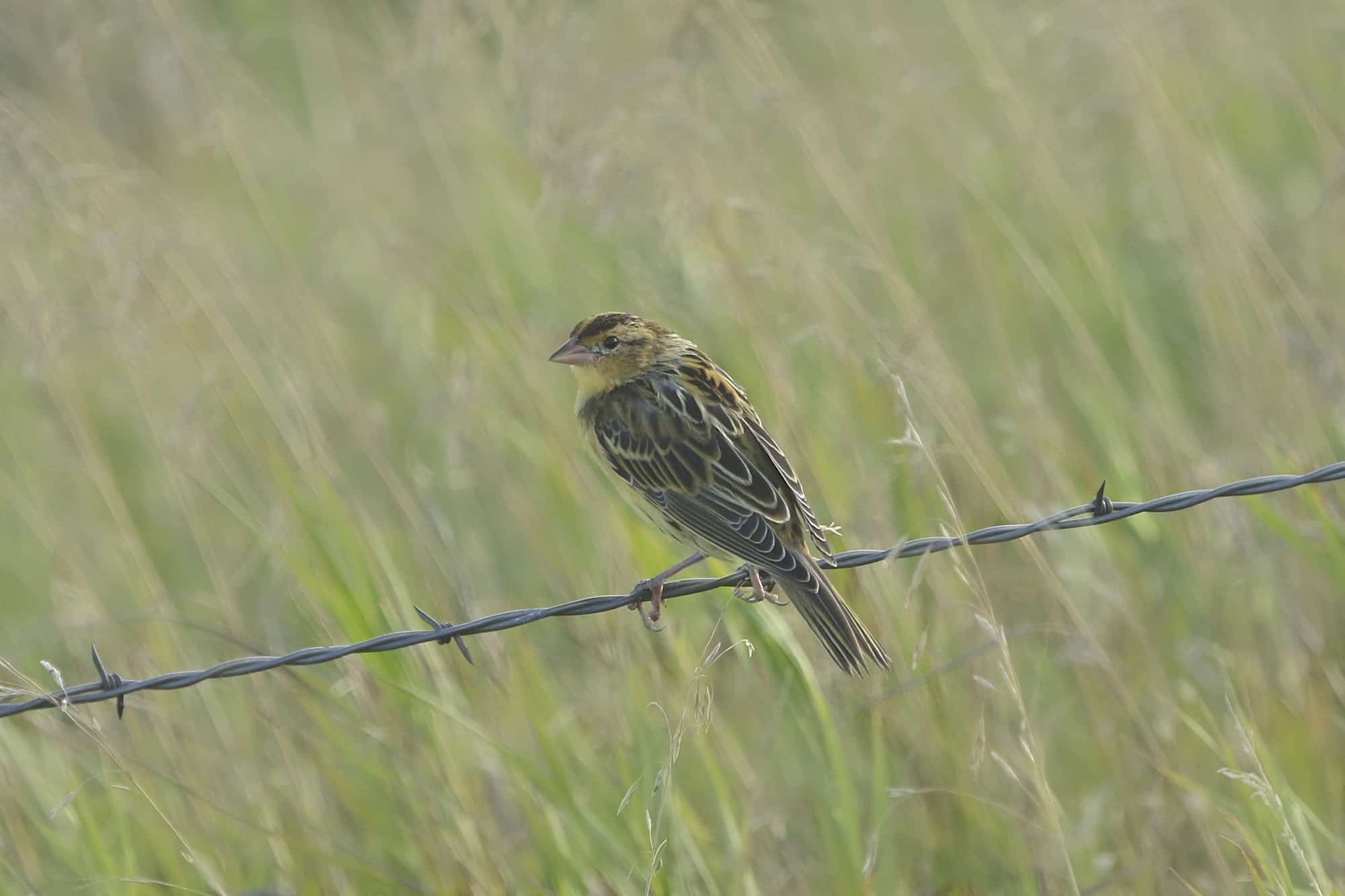
- Scientific Name: Ammospiza leconteii
- Length: 4.7-5.1 in
- Weight: 0.4-0.6 oz
- Wingspan: 6.3-7.1 in
One of the resident sparrows you’re least likely to see in Alabama is LeConte’s sparrow. These tiny, secretive birds are one of the smallest of all the New World sparrows.
Spending much of their time in long clumps of grass, and well-camouflaged, even the simple songs of LeConte sparrows are very minimal and discreet!
With a very limited range, Alabama is one of only ten states where LeConte’s sparrow overwinters in America.
Henslow’s Sparrow
- Scientific Name: Centronyx henslowii
- Length: 4.75 – 5.25 in
- Weight: Around 0.5 oz
- Wingspan: 7 – 7.5 in
Henslow’s sparrow has a more southerly range than most sparrows on our list, breeding exclusively in the northern United States, and overwintering only along America’s southernmost fringes.
These sparrows are a very rare sighting these days in Alabama, and can only be seen in the southern half of the state during the winter.
Numbers of these birds plummeted with the loss of habitat, but are now stabilizing, thanks in part to the Conservation Reserve Program implemented by the United States Department of Agriculture.
These birds are most easily recognized by their yellow-greenish head and repetitive high-pitched call.
Nelson’s Sparrow
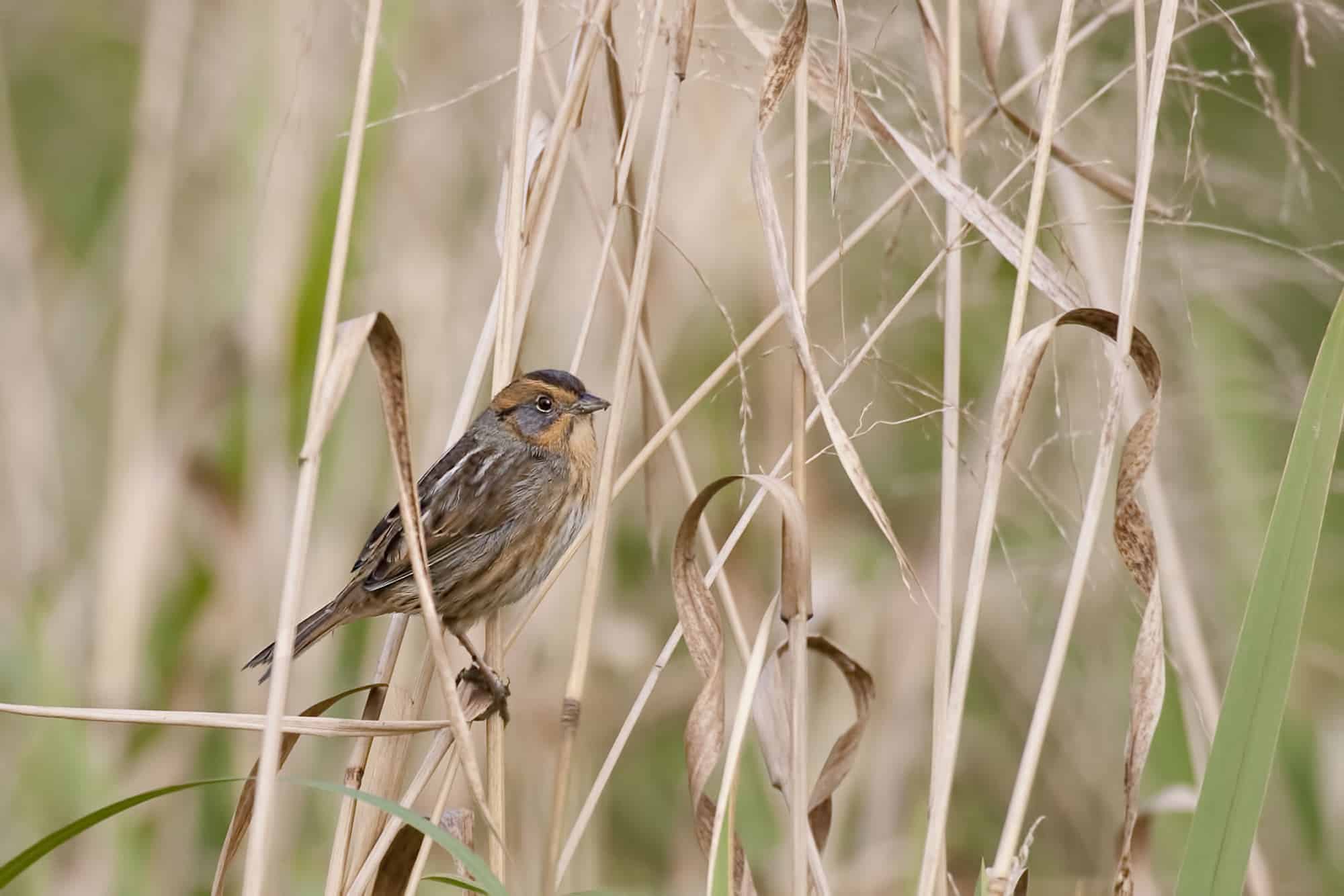
- Scientific Name: Ammospiza nelsoni
- Length: 4.3-5.1 in
- Weight: 0.6-0.7 oz
- Wingspan: 6.5-7.9 in
Nelson’s sparrow is a rarer North American sparrow with a very confined geographical range. In the summer it breeds in the Northern United States and Canada, and in winter it can be found solely in coastal parts of the southeastern states, including Alabama.
With a wingspan of just 6-8 inches, this small new world sparrow was previously thought to be the same species as the saltmarsh sparrow – now recognized as a distinct species.
But like the salt marsh sparrow, these birds love spending time in marshy habitats, digging around in freshwater and saltwater mud, looking for the worms, insect larvae, and other juicy morsels that dwell there.
Lincoln’s Sparrow
- Scientific Name: Melospiza lincolnii
- Length: 5.1-5.9 in
- Weight: 0.6-0.7 oz
- Wingspan: 7.5-8.7 in
Another sparrow that loves marshy habitats, Lincoln’s sparrow is a very rare sighting in Alabama. Although some birds spend the entire winter here, their small populations and secretive nature makes them very difficult to see.
One of the best chances you’ll have of identifying a Licoln’s sparrow is to learn its song. Quite distinct from its cousins the song sparrow and swamp sparrow, Lincoln’s sparrow produces a lively, gurgling song that resembles that of a wren.
Scientists still have much to learn about Licoln’s sparrows which is a testament to how hard they are to observe!
A highly-prized sighting that you’re unlikely to see at your bird table any time soon!
Conclusion
After reading this guide, you’ll hopefully understand that Alabama is a mecca for sparrows!
The state’s mild winters and varied landscapes offer abundant opportunities for all kinds of these cheerful birds.
Whether you’re a lifelong Alabama resident or just passing through the state and checking out the bird life, we’d highly recommend you check out our guide to some of the most amazing birds you can find in Alabama here.

